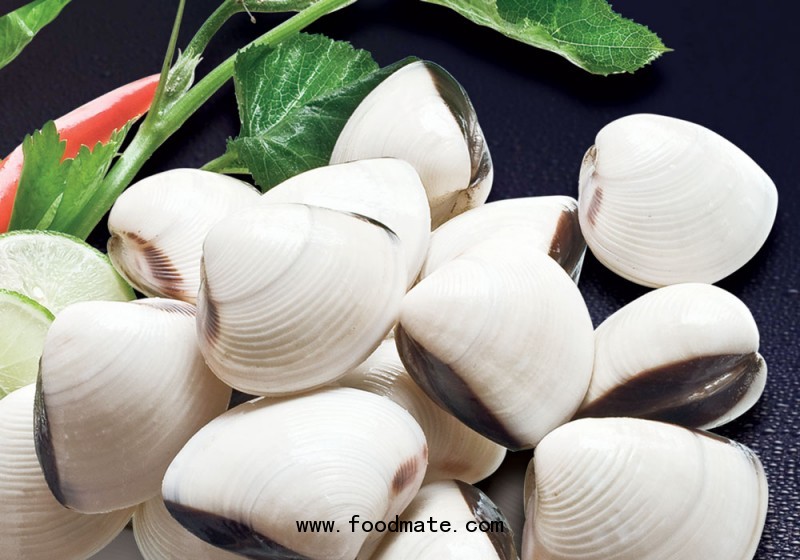VIETNAMESE CLAMS (MERETRIX LYRATA)
It is one of the high – economic – value fishery products in Vietnam.


It is a high nutritional value product. Clam shell can be used in fine arts and processing lime for fishery cultuvation. Meretrix lyrata is a bivalve mollusc inhabiting intertidal and shallow sub tidal sand flat areas, typically in outer estuary areas where the proportions of sand and mud are around 80% and 20%, respectively. It is reported from large parts of South East Asia including Indonesia, the Philippines, Thailand and Vietnam, but is densest from Taiwan to Vietnam. It commonly grows to 50mm in length inter-tidally but can be much larger subtidally. In the Mekong Delta, Vietnam, the species is widely distributed in sand flat areas of which the highest density and production are recorded.
Meretrix Lyrata (Sowerby, 1851), also called Lyrate Asiatic, distributes in West Pacific Ocean, from Taiwan to Vietnam. Its shape is like a triangle with the two equal shells.
According to Habe, Sadao (1966) and Nguyen Chinh (1996), Ben Tre clam can be identified as follow: Phylum: Mollusca Class: Bilvalvia. Division: Heterodonta Family: Veneridae Race: Meretrix Species: Meretrix Lyrata (Sowerby, 1851).
The life history of Meretrix lyrata is divided into three stages as follows:
- The stage of plankton post-larvae (Trochophora): The post larvae move up to the water surface at night time, and down to bottom during day time. When the high tide occurs the post-larvae also move up to water surface, and during the low tide they move down to the bottom. The vertical movements do not exceed 4 – 5m. This is the reason why during the plankton stage, post-larvae can exist in areas next to river mouths and avoid being carried off shore. - The stage of attached post-larvae (Veliger) which represents the transfer to bottom living: for a short period, the post-larvae develop byssus for attaching to hard substrates such as stones and shells in sand flat areas.
- Adult stage, in which the clams are buried in sand.
Meretrix Lyrata (Sowerby, 1851), also called Lyrate Asiatic, distributes in West Pacific Ocean, from Taiwan to Vietnam. Its shape is like a triangle with the two equal shells.
According to Habe, Sadao (1966) and Nguyen Chinh (1996), Ben Tre clam can be identified as follow: Phylum: Mollusca Class: Bilvalvia. Division: Heterodonta Family: Veneridae Race: Meretrix Species: Meretrix Lyrata (Sowerby, 1851).
The life history of Meretrix lyrata is divided into three stages as follows:
- The stage of plankton post-larvae (Trochophora): The post larvae move up to the water surface at night time, and down to bottom during day time. When the high tide occurs the post-larvae also move up to water surface, and during the low tide they move down to the bottom. The vertical movements do not exceed 4 – 5m. This is the reason why during the plankton stage, post-larvae can exist in areas next to river mouths and avoid being carried off shore. - The stage of attached post-larvae (Veliger) which represents the transfer to bottom living: for a short period, the post-larvae develop byssus for attaching to hard substrates such as stones and shells in sand flat areas.
- Adult stage, in which the clams are buried in sand.


